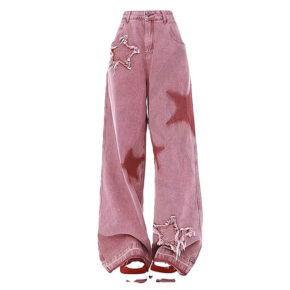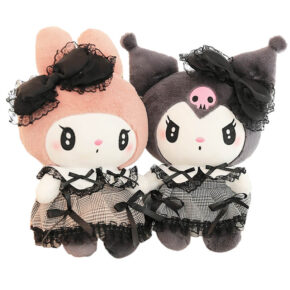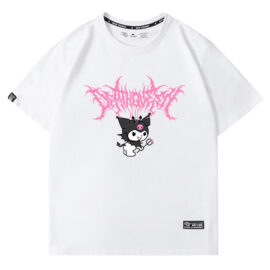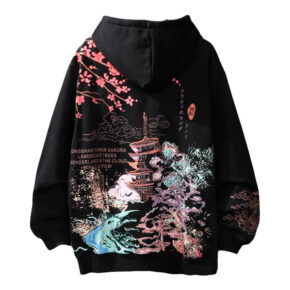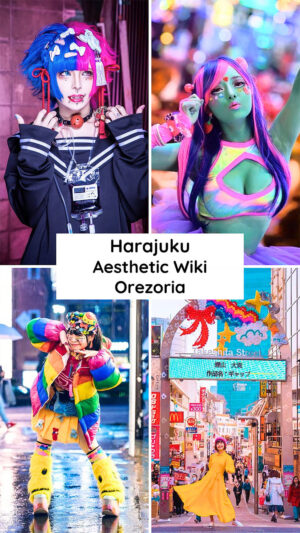
The Harajuku aesthetic is a unique and vibrant style that has captivated fashion enthusiasts worldwide. Known for its bold and colorful fashion choices, the Harajuku aesthetic is a representation of self-expression and freedom in the world of fashion.
Originating from the Harajuku district in Tokyo, Japan, this style has a rich historical significance. In the late 1970s and early 1980s, Harajuku became a popular meeting place for young people who wanted to showcase their individuality through fashion. Over the years, the Harajuku aesthetic has evolved and incorporated various elements from Japanese culture, anime characters, and mainstream fashion trends.
What sets the Harajuku aesthetic apart is its fearless and imaginative approach to fashion. From pastel colors and hair clips to leg warmers and anime-inspired clothing, Harajuku fashion is a delightful sensory overload. It is a treasure trove of styles, with a wide variety of fashion choices for both Japanese and Western girls.
The Harajuku aesthetic has become a popular style worldwide, admired for its creativity and unique fashion statements. It has also influenced other fashion movements, such as eccentric pop fashion and the age-old fashion rule of breaking boundaries. Whether it’s a Lolita dress or a brightly colored hairdo, the Harajuku aesthetic continues to inspire individuals to embrace their own personal style and celebrate the freedom of self-expression in fashion.
Related aesthetics: Y2K, Alternative, Animecore, 2K Animecore, Arcade Kid, Cute, Cyber Y2K, Dollette, E-Boy, E-Girl, Gamer, Geek, Grunge, J-Pop, J-Rock, Kawaii, Kidcore, Lolita, Mallgoth, Manga, Pastel, Pastel Goth, Punk, Soft Goth, Visual Kei, Webcore, Yandere
Full List of Aesthetics
History of the Harajuku Aesthetic
The Harajuku aesthetic has a captivating history that dates back to the 1980s. It originated in the bustling streets of Tokyo’s Harajuku district, where youth fashion flourished and self-expression ran wild. At a time when conformity was the norm, young people saw fashion as a means of breaking free from societal constraints.
The influence of western fashion on Japanese attire cannot be overlooked. Access to fashion magazines and music videos from the West introduced new styles and trends to the Japanese youth. These influences, combined with Japan’s rich cultural heritage, gave rise to the unique and flamboyant Harajuku style.
The movement gained significant momentum in the early 2000s. It became synonymous with freedom of expression and individuality. Harajuku fashionistas could be seen sporting vibrant colors, layering clothes in unconventional ways, and experimenting with hairstyles and accessories. FRUiTS magazine, a cult favorite publication, played a crucial role in showcasing and documenting the various subcultures and street styles that emerged from Harajuku.
Today, the Harajuku aesthetic continues to evolve, welcoming influences from anime, mainstream fashion, and various subcultures. It remains a symbol of vibrant creativity and a celebration of personal style, attracting fashion enthusiasts from all over the world.
Exploring Harajuku Street Style in Tokyo
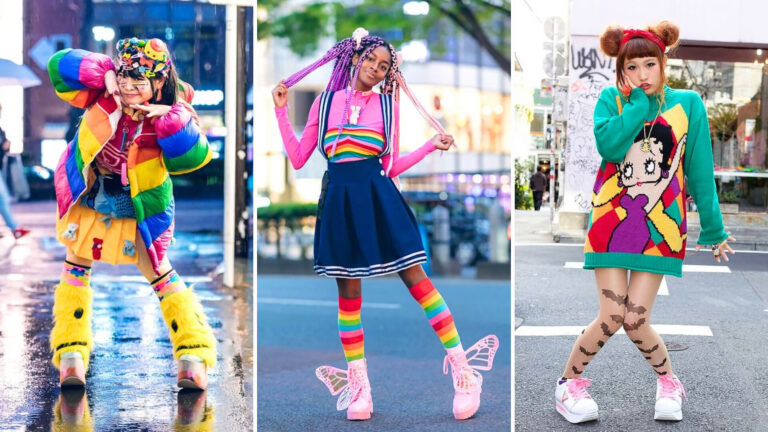
Harajuku, a district in Tokyo, Japan, is famous for its vibrant and eclectic street fashion. It has become a global hub for fashion enthusiasts and trendsetters looking to immerse themselves in the unique and innovative Harajuku aesthetic. From the colorful and playful Lolita fashion to the eye-catching anime-inspired outfits, Harajuku offers a treasure trove of fashion inspiration and self-expression.
This fashion movement is all about breaking free from age-old fashion rules and embracing eccentric pop fashion. In Harajuku, it’s not uncommon to see bright colors, pastel hues, and an abundance of accessories like hair clips and leg warmers. Hair is treated as a canvas for self-expression with vibrant and unconventional hair colors, often accompanied by whimsical hair accessories. The fashion culture in Harajuku is diverse and constantly evolving, showcasing a wide variety of styles and subcultures.
Whether you’re a fan of kawaii culture or enamored by more dark and edgy fashion statements, Harajuku has something for everyone. Step into the streets of Harajuku, and immerse yourself in a sensory overload of style and individuality.
Harajuku Station: Pedestrian Paradise or Sensory Overload?
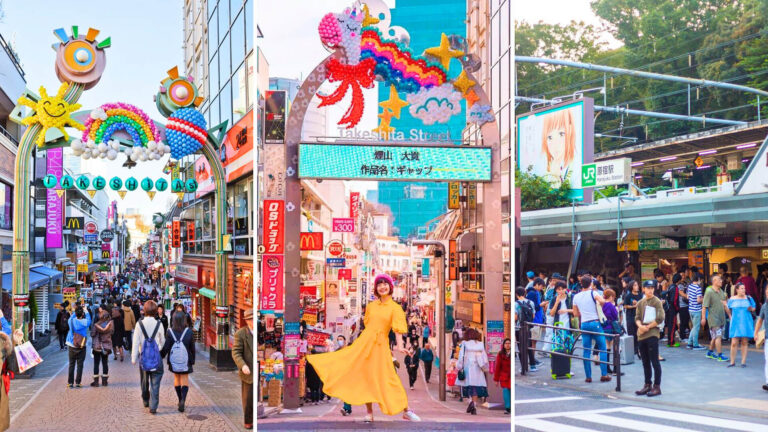
Located in Tokyo, Harajuku Station is not just any ordinary train station. It is a hub of vibrant street fashion, unique shops, and a bustling atmosphere that can either be described as a pedestrian paradise or a sensory overload.
As visitors step out of the JR Yamanote Line and into Harajuku Station, they are immediately greeted by a wave of vibrant colors, eccentric pop fashion, and a wide array of fashion-forward individuals. The streets surrounding the station are filled with young locals and tourists alike, showcasing their own unique take on Japanese fashion.
One of the most popular attractions near Harajuku Station is Takeshita Street. This narrow pedestrian pathway is a treasure trove of kawaii clothing, inexpensive clothes, and accessories. Visitors can find everything from hair clips and leg warmers to anime character-themed clothing and pastel-colored outfits. It’s the perfect place for anyone looking to embrace the Harajuku aesthetic.
To reach Takeshita Street, visitors can simply follow the signs to the Takeshita Exit at Harajuku Station. From there, they will be transported into a world where mainstream fashion rules are thrown out the window. Instead, they will encounter a fashion movement that embraces bright colors, bold patterns, and age-old fashion rules are reimagined.
The Treasure Trove of Shopping Options at Harajuku Clothing Stores
When it comes to shopping, Harajuku clothing stores offer a treasure trove of options. Visitors can immerse themselves in a world of unique styles and find everything from elegant lolita dresses to gothic attire. This eclectic fashion scene is what sets Harajuku apart from other shopping districts in Japan.
Harajuku clothing stores cater to all kinds of fashion tastes, making it a haven for those seeking to express their individuality. Elegant lolita dresses with their frills, lace, and delicate details can transport anyone to a whimsical fairy tale. On the other end of the spectrum, gothic attire offers a darker and edgier aesthetic with its intricate designs and luxurious fabrics.
But the options don’t stop there. Harajuku is also known for its diverse range of styles such as decora kei, which features bright and colorful outfits adorned with numerous accessories, and cosplay costumes inspired by popular anime and manga characters. In these stores, visitors can find clothing, bags, and accessories that are unlikely to be found elsewhere.
Whether you’re searching for a unique outfit or want to add a touch of Harajuku fashion to your wardrobe, the wide variety of options available at Harajuku clothing stores is sure to satisfy your fashion needs. So, step into this vibrant fashion hub and discover the endless possibilities that await you.
Popular Styles for Western Girls Visiting Japan
When it comes to popular styles for Western girls visiting Japan, Harajuku fashion offers a treasure trove of options. This vibrant fashion movement is known for its wide variety of subcultures, each with its own unique aesthetic. These styles have not only influenced the fashion scene in Japan but also Western fashion trends.
Harajuku fashion places a strong emphasis on self-expression and creativity. Western girls visiting Japan often find themselves drawn to the bright colors, cartoon prints, and unique accessories that characterize this fashion movement. The incorporation of these elements allows individuals to showcase their personality and individuality through their clothing choices.
Japanese pop culture, particularly anime and popular music, has had a significant influence on Harajuku fashion. Many Western girls find themselves inspired by the fantastical world of anime and the fashion choices of their favorite Japanese music artists. This influence can be seen in the way Western girls embrace the Harajuku aesthetic, incorporating elements such as anime-inspired prints, iconic hairstyles, and even cosplay-inspired outfits.
Harajuku fashion offers a refreshing departure from mainstream fashion by embracing eccentricity and breaking age-old fashion rules. With its vibrant colors, unique accessories, and diverse subcultures, it is no wonder that Western girls are drawn to this popular style when visiting Japan. Harajuku fashion truly allows individuals to express their creativity and showcase their unique sense of style.
Types of Harajuku Sub Styles and Related Aesthetics
The Harajuku aesthetic is a fashion movement that encompasses a wide variety of styles and influences. Within the Harajuku fashion scene, there are several distinct substyles, each with its own unique characteristics. Let’s overview some of them:
Kawaii
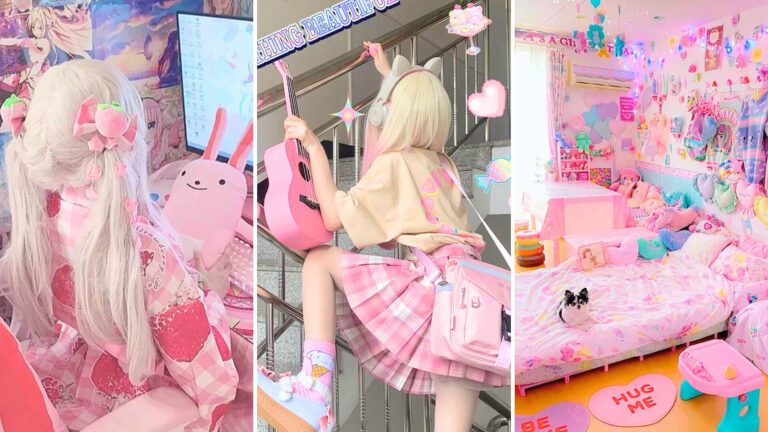
Kawaii, a Japanese term that translates to “cute” or “adorable,” is a vibrant and popular aesthetic that celebrates all things childlike and pretty. It encompasses a wide range of visual and cultural elements that have shaped Japanese consumer culture.
From its origins in 1970s Japan, Kawaii has evolved into various subgenres, each with its own unique style and charm. Gurokawa combines the cute and innocent Kawaii aesthetic with a darker and more edgy twist, incorporating elements of horror and gore. Erokawa, on the other hand, merges Kawaii with eroticism, creating a playful and flirtatious aesthetic.
Kawaii extends beyond just fashion; it permeates through character design, room decor, and even food presentation. Pastel colors, hair clips, leg warmers, and anime characters are all popular features of Kawaii fashion. Japanese girls, as well as Western girls embracing the style, can often be seen sporting bright colors and unconventional hair color choices.
With its wide variety of styles and influences, Kawaii has become a captivating fashion movement that defies age-old fashion rules. It is a sensory overload and treasure trove of inexpensive clothing options, allowing individuals to express their unique personality through vibrant colors and quirky designs.
Decora
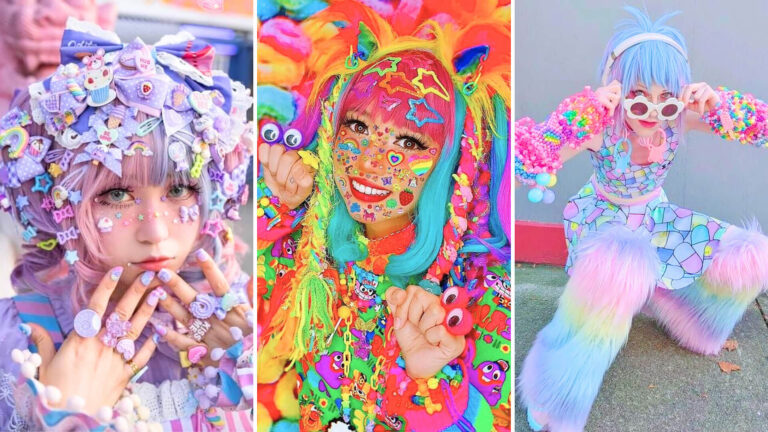
Decora is one of the most colorful and playful subgenres of Harajuku fashion. Originating in Japan, Decora kei is known for its bold and vibrant aesthetic, characterized by its heavy use of accessories.
In Decora fashion, it’s all about the fun and playful details. Outfits are adorned with an abundance of accessories including hair clips, band-aids, bracelets, and more. The goal is to create a look that is visually stimulating and eye-catching.
Decora outfits often feature tutu skirts in a wide range of vibrant colors and textures. Leg warmers and knee-high socks are also popular additions, adding to the dynamic and energetic vibe of the style.
The Decora subculture embraces the philosophy of self-expression and experimentation. It encourages its followers to embrace their creativity and unique style through the use of accessories and bold color choices.
In the colorful world of Decora, it’s all about celebrating individuality and having fun with fashion. Whether it’s mixing and matching different colors or experimenting with various accessories, Decora fashion is a true testament to the expressive and playful nature of Harajuku fashion.
Visual Kei
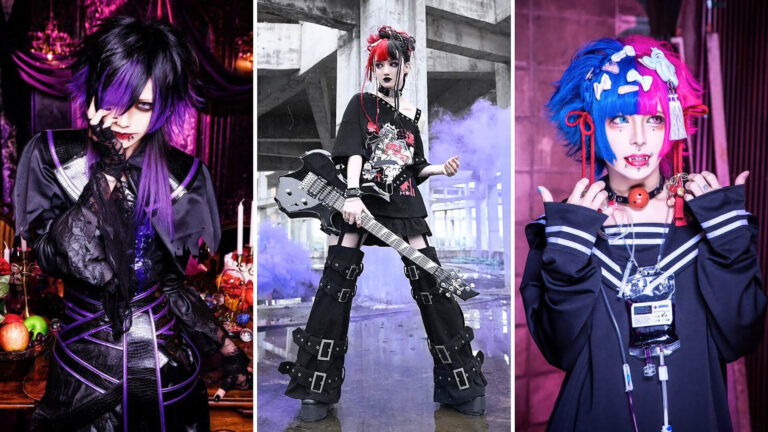
Visual Kei is a subcategory of the Harajuku aesthetic that originated in the 1980s among Japanese musicians. Influenced by Glam rock, Goth, and Punk, Visual Kei is known for its flamboyant and androgynous style.
One of the defining features of Visual Kei is its extravagant hair. Musicians often sported big, teased hairstyles in a variety of vibrant colors, creating a striking visual impact. Heavy makeup is also a prominent aspect of this subculture, with artists experimenting with bold and dramatic looks.
Elaborate costumes are another characteristic of Visual Kei. Artists frequently donned extravagant outfits, often inspired by historical or fantasy elements. These costumes were intricately designed and emphasized the theatricality of the subculture.
Footwear in Visual Kei is typically bold and edgy. Combat boots and platform shoes are commonly worn, adding to the overall rebellious and alternative aesthetic of the style.
Visual Kei embodies the Harajuku aesthetic through its fearless and boundary-pushing fashion choices. It challenges gender norms and embraces individuality through its androgynous look and self-expression.
Lolita Style
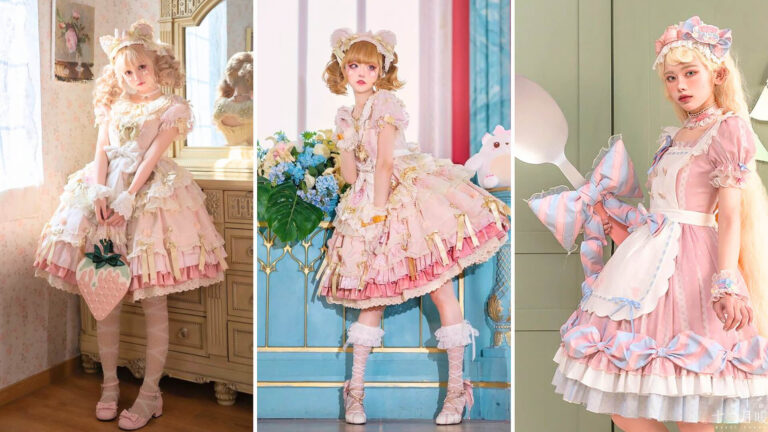
Lolita Style, originating in the 1960s in Japan, draws inspiration from Victorian clothing and the extravagant Rococo period. This unique fashion subculture is characterized by its feminine and doll-like aesthetics, embracing a whimsical and romantic look.
At the core of Lolita fashion are the iconic big dresses adorned with bows, lace, and ruffles. These voluminous garments create a sense of elegance and femininity, reminiscent of the Victorian era’s emphasis on modesty and refinement. The dresses often feature elements such as puffed sleeves, corsets, and delicate frills, further enhancing the romantic and delicate appeal.
Lolita enthusiasts also incorporate elaborate headpieces into their outfits. This includes wigs, bonnets, and berets adorned with ribbons, flowers, and other ornate details. These headpieces not only complement the overall aesthetic but also add an extra layer of charm and playfulness to the look.
Overall, Lolita Style is a celebration of femininity, fantasy, and historical elegance. It is a fashion movement that encourages individuals to embrace their inner princess and express themselves through elaborate, doll-like ensembles. With its nod to Victorian clothing and the Rococo period, Lolita Style has become an internationally recognized and adored fashion subculture.
Harajuku Cosplay
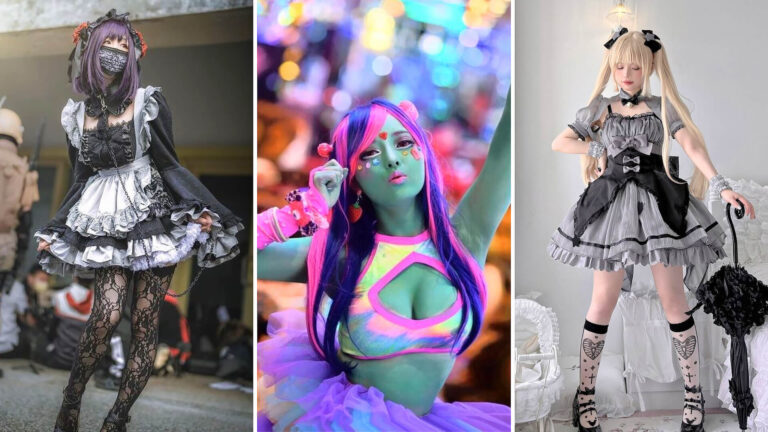
Harajuku Cosplay is a popular sub-style within the Harajuku aesthetic, where individuals indulge in the art of dressing up as characters from anime, manga, video games, and other pop culture sources. This unique form of self-expression allows enthusiasts to immerse themselves in the fantastical worlds of their favorite fictional characters.
One of the defining features of Harajuku Cosplay is the vibrant and elaborate costumes. These outfits are often handmade or meticulously sourced, incorporating intricate designs and attention-grabbing details. Cosplayers go to great lengths to ensure that their costumes capture the essence of the characters they are portraying, allowing them to fully embrace their alter egos.
Harajuku Cosplay is more than just dressing up; it is a celebration of creativity, imagination, and fandom. It enables individuals to channel their passion for anime, manga, video games, and pop culture into a visual and interactive art form. The Harajuku district in Tokyo is a popular hub for Cosplay enthusiasts, with its vibrant atmosphere and lively community serving as a welcoming space for like-minded individuals to come together and showcase their unique creations.
Sanriocore and Kuromicore
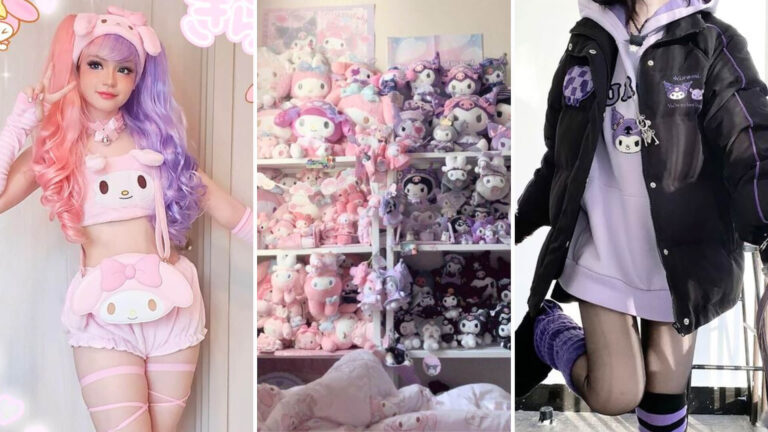
The Harajuku aesthetic is not limited to just one style, but encompasses a wide variety of substyles that cater to different tastes and preferences. In addition to the vibrant and colorful costumes of Harajuku Cosplay, two popular substyles that have emerged are Sanriocore and Kuromicore.
Sanriocore is a substyle of the Harajuku aesthetic that revolves around the incorporation of Sanrio characters and merchandise into fashion and accessories. Sanrio, the company behind iconic characters like Hello Kitty and My Melody, has gained a cult following among Harajuku fashion enthusiasts. Sanriocore fashion often includes clothing adorned with Sanrio characters, as well as accessories like bags, jewelry, and even shoes inspired by these beloved characters. Pastel colors, playful patterns, and a sense of innocence are key features of Sanriocore fashion, creating a whimsical and kawaii aesthetic.
On the other hand, Kuromicore is characterized by a darker color palette and elements of gothic fashion. While still embracing the Harajuku spirit, Kuromicore takes a more unconventional approach by incorporating black and other dark colors into outfits. Gothic-inspired clothing, such as corsets, lace, and platform boots, are often seen in Kuromicore fashion. This substyle is influenced by alternative subcultures like goth fashion and punk, giving it a rebellious and edgy vibe that sets it apart from other Harajuku styles.
Harajuku Aesthetic Fashion and Outfits Guide
Harajuku fashion is a unique and eclectic style that originated in the vibrant streets of Tokyo’s Harajuku district. Known for its bold and innovative approach to fashion, Harajuku style is a melting pot of various subcultures and influences, resulting in a visually stunning and diverse aesthetic.
Harajuku Clothing
Harajuku clothing is a popular style that originated in Japan and has become a global fashion movement. It encompasses a wide variety of unique and eye-catching fashion choices. One of the most notable styles within Harajuku fashion is eccentric pop fashion, which combines bright colors, bold prints, and unconventional designs. This style often incorporates elements from various fashion cultures, creating a visual feast that stands out from mainstream fashion.
Lolita fashion is another prominent aspect of Harajuku clothing. Inspired by Victorian and Rococo styles, Lolita fashion features elegant dresses, petticoats, and intricate accessories. It embodies a delicate and feminine look, characterized by a mix of pastel colors and whimsical patterns. Lolita fashion enthusiasts often embrace the concept of “do it yourself” customization, creating unique and personalized outfits.
What sets Harajuku clothing apart is its fearless approach to fashion. It embraces the use of vibrant colors, bold patterns, and unexpected pairings. Harajuku fashionistas are not afraid to mix opposite styles, such as combining punk elements with girly pieces. Layering is also a common technique used in Harajuku clothing, creating a visually complex and dynamic outfit. Accessories play a crucial role in completing the look, with oversized hair clips, leg warmers, and anime-inspired pieces being popular choices.
Harajuku clothing is not limited to traditional fashion rules but rather encourages self-expression and creativity. With its eclectic mix of styles, bright colors, and DIY approach, it has become a popular fashion statement both in Japan and around the world.
You can find more Harajuku clothing and accessories in our Harajuku Outfits Collection.
Try our new Aesthetic Outfits AI to Try-on Clothes.
Harajuku Accessories
Harajuku fashion is known for its unique and eclectic accessories that add an extra dose of color and quirkiness to outfits. Brightly colored items are a staple of the Harajuku aesthetic, offering a playful and vibrant touch to any ensemble.
One of the defining features of Harajuku accessories is their customized nature. Harajuku fashionistas often take a DIY approach, adding their own personal touch to their outfits. Customization allows individuals to express their creativity and individuality, making each look truly unique.
Hair clips are a popular accessory in Harajuku fashion. From oversized bows to cute animal-shaped clips, these colorful hair accessories instantly elevate any hairstyle. Leg warmers are another beloved accessory, adding a fun and energetic element to an outfit while also providing practicality during colder months.
Statement jewelry is also highly valued in Harajuku fashion. Chunky and oversized necklaces, brimming with bright colors and unique designs, are worn to make a bold fashion statement. Earrings featuring playful motifs like animals or fruits are also commonly seen.
Harajuku accessories offer a wide range of options for individuals to express themselves creatively. They provide the perfect finishing touch to Harajuku outfits, allowing wearers to truly embrace the spirit of this vibrant and dynamic fashion movement.
Harajuku Makeup
Harajuku Makeup plays a significant role in enhancing the vibrant and eclectic style of the Harajuku aesthetic. It is a key component in creating the unique and eye-catching looks that Harajuku fashionistas are known for.
One of the standout features of Harajuku Makeup is the use of vibrant colors. Colorful eyeshadows in shades of neon pink, electric blue, and sunny yellow are often used to create dramatic and playful eye looks. Bold eyeliner is also a common element, with thick lines and geometric shapes adding a touch of avant-garde to the overall aesthetic.
Doll-like blush is another prominent aspect of Harajuku Makeup. Soft pastel shades are applied to the cheeks in a circular motion, creating a youthful and flushed appearance. This doll-like effect adds a quirky and adorable touch to the overall look.
Creative lip colors are also embraced in Harajuku Makeup. From metallic gold to bright turquoise, bold and unconventional lip shades are used to make a statement. Lip art, where unique designs and patterns are created using different lip colors, is also commonly seen in the Harajuku style.
Techniques and styles in Harajuku Makeup vary, but pastel and rainbow-inspired looks are particularly popular. These whimsical styles involve blending different pastel shades on the eyes and cheeks, creating a dreamy and ethereal effect.
Harajuku Hairstyles
Harajuku Hairstyles are an essential part of the overall Harajuku aesthetic, offering individuals a wide range of options to express their personal style. One of the most standout features of Harajuku Hairstyles is the use of vibrant and unique hair colors. From cotton candy pastels to bold and bright neons, individuals in Harajuku fashion love experimenting with all shades of the rainbow. These eye-catching colors allow them to stand out and make a bold fashion statement.
In addition to the colorful hair, eccentric hairstyles are also commonly seen in the Harajuku fashion scene. Whether it’s elaborate braids, intricate updos, or asymmetrical cuts, individuals in Harajuku fashion embrace unconventional and avant-garde styles. These bold and edgy hairstyles perfectly complement the overall Harajuku aesthetic, adding an extra element of creativity and individuality.
To complete the look, Harajuku fashion enthusiasts frequently incorporate a wide variety of hair accessories. From oversized hair clips adorned with bows and ribbons to decorative headbands and trendy hair scarves, these accessories add a playful and whimsical touch to the hairstyle. They serve as the perfect embellishments to enhance and elevate the overall Harajuku look.
Harajuku Nails and Nail Art
Harajuku fashion isn’t just limited to clothing and hair. It extends to every aspect of personal style, including nails. Nail art has become a popular form of self-expression among Harajuku fashion enthusiasts, allowing them to showcase their creativity and individuality in yet another unique way.
In the world of Harajuku nails, the possibilities are endless. From elaborate hand-painted designs to intricate 3D embellishments, there are no limits to what can be created on the nail canvas. Popular choices for nail art include pastel colors, vibrant hues, and bold patterns, all reflecting the playful and eclectic nature of Harajuku fashion.
Some common nail art techniques seen in the Harajuku aesthetic include gradient nails, where multiple colors seamlessly blend together, and marble nails, which mimic the texture of the stone. Additionally, nail stickers, glitter, and rhinestones are often used to add extra flair and dimension to the designs.
The nail art designs themselves vary widely, from cute and kawaii characters to edgy and punk-inspired motifs. Harajuku fashion enthusiasts use their nails as a way to make a fashion statement, ensuring that their hands are just as eye-catching as the rest of their ensemble.
In the world of Harajuku fashion, even the smallest details matter. And with Harajuku nails, individuals can express their unique style and creativity with every flick of their fingers.
Tips on How to Create Your Harajuku Outfit
Creating a Harajuku outfit is all about embracing individuality and incorporating a mix of different styles, colors, and elements. To create your own unique Harajuku look, follow these essential steps:
- Clothing: Harajuku fashion is known for its eclectic mix of styles. Combine pieces from different fashion genres such as lolita fashion, mainstream fashion, and streetwear. Opt for bright colors, bold patterns, and unique cuts to make a statement. Mix and match contrasting styles like pairing a frilly lolita dress with a punk-inspired leather jacket.
- Accessories: Accessories play a crucial role in completing a Harajuku outfit. Hair clips, leg warmers, and vibrant socks are common choices. Don’t shy away from adding playful touches like anime characters or quirky prints. Experiment with layering multiple accessories to add depth to your look.
- Makeup and Hairstyles: Harajuku makeup is often characterized by pastel colors and an emphasis on eyes or lips. Give your makeup a kawaii touch by using colorful eyeshadows, eyeliner, and lipsticks. For hairstyles, try bold and unique styles like pastel-colored wigs, vibrant hair extensions, or elaborate braids.
- Mix and Match: The key to a Harajuku outfit is to mix and match different elements and styles to create your own customized look. Don’t be afraid to experiment with unexpected combinations. Unleash your creativity and let your personality shine through your outfit.
- Where to Find Harajuku Clothing and Accessories: Look for Harajuku and Japanese-inspired brands online or in specialized boutiques. Keep an eye out for thrift stores and second-hand shops, as Harajuku fashion often incorporates inexpensive and unique clothes. Online marketplaces and social media platforms are also great sources for Harajuku clothing and accessories.
By following these tips, you’ll be able to create your own vibrant and eye-catching Harajuku outfit, embracing the essence of this popular fashion movement.
Impact of Harajuku Aesthetic on Fashion
The Harajuku aesthetic has had a significant impact on the world of fashion, challenging mainstream norms and allowing individuals to showcase their unique personal styles. With its emphasis on diverse styles, creativity, and self-expression, Harajuku has become a global fashion movement that continues to inspire designers and influence trends.
Harajuku fashion is known for its eclectic mix of styles, combining elements from different genres such as lolita fashion, mainstream fashion, and streetwear. This diversity allows individuals to experiment, creating outfits that are truly one-of-a-kind. By encouraging creativity and embracing individuality, Harajuku fashion has opened up possibilities for self-expression in a way that goes beyond traditional fashion rules.
The Harajuku aesthetic has also challenged mainstream fashion norms, breaking away from conventional ideas of what is considered “fashionable.” It has created a space for unique personal styles to flourish, celebrating individuality and promoting inclusivity. This has had a profound impact on the industry, pushing designers to think outside the box and redefine what is considered fashionable.
The influence of Harajuku and Japanese fashion can be seen in various global trends. Elements such as bright colors, bold patterns, and unique cuts have made their way into mainstream fashion, reflecting the influence of the Harajuku aesthetic. Brands and designers have drawn inspiration from this movement, incorporating its vibrant and unconventional elements into their collections. Harajuku fashion has become a symbol of creativity and self-expression, leaving a lasting imprint on the fashion world.
Harajuku Style in Music & Entertainment
The vibrant and eccentric Harajuku style has not only made its mark in the fashion world but has also had a significant influence on the music and entertainment industry. This unique aesthetic has become synonymous with pop culture, creating a captivating and eye-catching subculture.
Musicians and artists have embraced the Harajuku aesthetic, incorporating its bold colors, playful designs, and whimsical elements into their performances and music videos. From elaborate costumes to outlandish hair and makeup, they have tapped into the energy and individuality that is characteristic of Harajuku style.
Various music genres have been associated with the Harajuku aesthetic, including J-pop, K-pop, and even some Western artists who have been fascinated by its vibrant essence. Iconic performers like Gwen Stefani, who formed the Harajuku Lovers, have embraced this style, infusing it into their branding and music videos, creating a visual spectacle that captures the essence of the Harajuku movement.
The intertwining of Harajuku fashion and music has given rise to a unique subculture that continues to captivate audiences worldwide. With its influence extending beyond Japan, the Harajuku aesthetic has become a symbol of individuality and expression in the entertainment industry, further cementing its place in pop culture.
The Harajuku Aesthetic in Interior Design
The Harajuku aesthetic extends beyond fashion and into the world of interior design, drawing inspiration from the vibrant street fashion and subcultures that thrive in Harajuku, Tokyo. Known for its eclectic and bold elements, this aesthetic embraces a mix of vibrant colors, playful patterns, and a blend of vintage and modern decor.
Embracing the Harajuku aesthetic in interior design means creating spaces that exude energy and individuality. This can be achieved through the use of vibrant colors like hot pink, electric blue, and neon yellow, which instantly transform a room into a lively and dynamic space. Playful patterns, such as polka dots, stripes, and anime-inspired motifs, add a whimsical touch that captures the essence of Harajuku.
A key element of the Harajuku aesthetic is the blending of vintage and modern decor. This juxtaposition creates a unique and personal space that reflects the wearer’s individual style. Vintage furniture pieces, like retro sofas or antique dressers, can be paired with modern accents and accessories to create a visually striking composition.
Future of the Harajuku Aesthetic Beyond 2024
The future of the Harajuku aesthetic beyond 2024 holds exciting possibilities for its evolution and influence in global fashion and popular culture. This dynamic and vibrant style is expected to continue captivating fashion enthusiasts around the world with its unique and eclectic appeal.
One possible trend that may shape the Harajuku style in the coming years is a fusion of traditional Japanese elements with modern and global influences. This could manifest in the form of innovative designs that combine traditional textiles, like kimono fabrics, with contemporary cuts and silhouettes. The result would be a harmonious blend of old and new, creating truly one-of-a-kind garments.
Another adaptation that may have a significant impact on the Harajuku aesthetic is the integration of sustainable and eco-friendly practices. As the fashion industry increasingly embraces sustainability, we can expect to see eco-conscious materials, such as organic cotton and recycled fabrics, being incorporated into Harajuku-inspired clothing. This shift toward sustainability aligns with the aesthetic’s celebration of individuality and self-expression, extending its influence beyond style and into a broader cultural movement.
Furthermore, advancements in technology may also shape the future of the Harajuku aesthetic and Japanese Fashion. With the rise of augmented reality (AR) and virtual reality (VR) fashion experiences, individuals may be able to customize and experiment with Harajuku-inspired looks digitally before bringing them to life. This innovative approach will not only push the boundaries of creativity but also allow for greater accessibility to the Harajuku aesthetic on a global scale.
In conclusion, the Harajuku aesthetic is poised to continue its influence and adapt to the ever-changing fashion landscape. Through the fusion of traditional and modern elements, the integration of sustainability practices, and the utilization of technology, the future of the Harajuku aesthetic promises to be a captivating evolution that captivates fashion enthusiasts worldwide.
